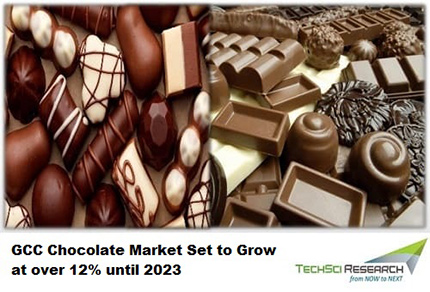This was one of the findings of a report, titled GCC Chocolate Market By Product Type, By Category, By Distribution Channel, By Country, Competition Forecast and Opportunities, 2013–2023, by research-based global management consulting firm TechSci Research.
Moreover, manufacturers are increasingly focussing on processing heat- and moisture-resistant chocolates, which would help to increase the product shelf life in the extreme climactic conditions of the Middle-East.
Additionally, a considerable demand for chocolate gift boxes, premium dark chocolates, etc., has been witnessed in the GCC region on various festive occasions, particularly in countries like Qatar and Bahrain, where the expenditure on chocolates has also been observed to be comparatively high.
Furthermore, the growing presence of chocolates across online portals would aid the growth of GCC chocolate market in the coming years.
As per a recent Voice of Customer survey published by TechSci Research, the prices and brand names of chocolates have been identified as the top influencing factors while purchasing chocolates.
The growing demand for premium chocolate products, increasing consumption of chocolate confectionery among the young population and companies expanding the brand portfolio of chocolate confectionery are expected to drive the GCC chocolate market through 2023.
Consumers in the age bracket of five and 24 accounted for a revenue share of over 73 percent in the overall chocolate market in the region in 2017.
GCC Chocolate Market
Among countries, Saudi Arabia dominated the market, with a share of over 45 percent in 2017. This country is expected to generate significant demand for chocolates, and is anticipated to remain dominant in the region during the forecast period as well, owing to high tourist footfall and the high expat population in the country.
The GCC chocolate market can be broadly categorised into chocolate pouches and bags, boxed chocolates, countline, tablets and others.
The countline segment accounts for the majority share in the market, as these products are high in demand, relatively less expensive than other categories and more of an impulse purchase.
Mars GCC FZE, Mondelez Arabia for Trading LLC, Nestle Middle East FZE, Ferrero Trading Dubai, Chocoladefabriken Lindt and Sprüngli, Patchi SAL, Al Nassma Chocolate LLC, etc. are some of the leading players operating in the GCC chocolate market.
“The rising trend of using chocolate as a substitute to traditional sweets due to the growing influence of the western culture, the increasing tourist footfall, the expatriate population, and the expansion of product portfolio of chocolate manufacturers are some of the major growth drivers in GCC chocolate market,” said Karan Chechi, research director, TechSci Research.
“Moreover, the emergence of several variants of chocolates, such as sugar-free chocolate, cholesterol-free chocolate and chocolate with low-fat content to cater to the health-conscious customers would further steer growth in GCC chocolate market during the forecast period,” he added.
GCC Chocolate Market By Product Type, By Category, By Distribution Channel, By Country, Competition Forecast and Opportunities, 2013 and 2023 evaluated the future growth potential of GCC chocolate market and provides statistics and information on market structure, size, share and trends.
The report was intended to provide cutting-edge market intelligence and help decision makers to take sound investment decisions. Besides, it also identified and analysed the emerging trends, along with the essential drivers, challenges and opportunities present in the GCC chocolate market.

Spurce: www.fnbnews.com





